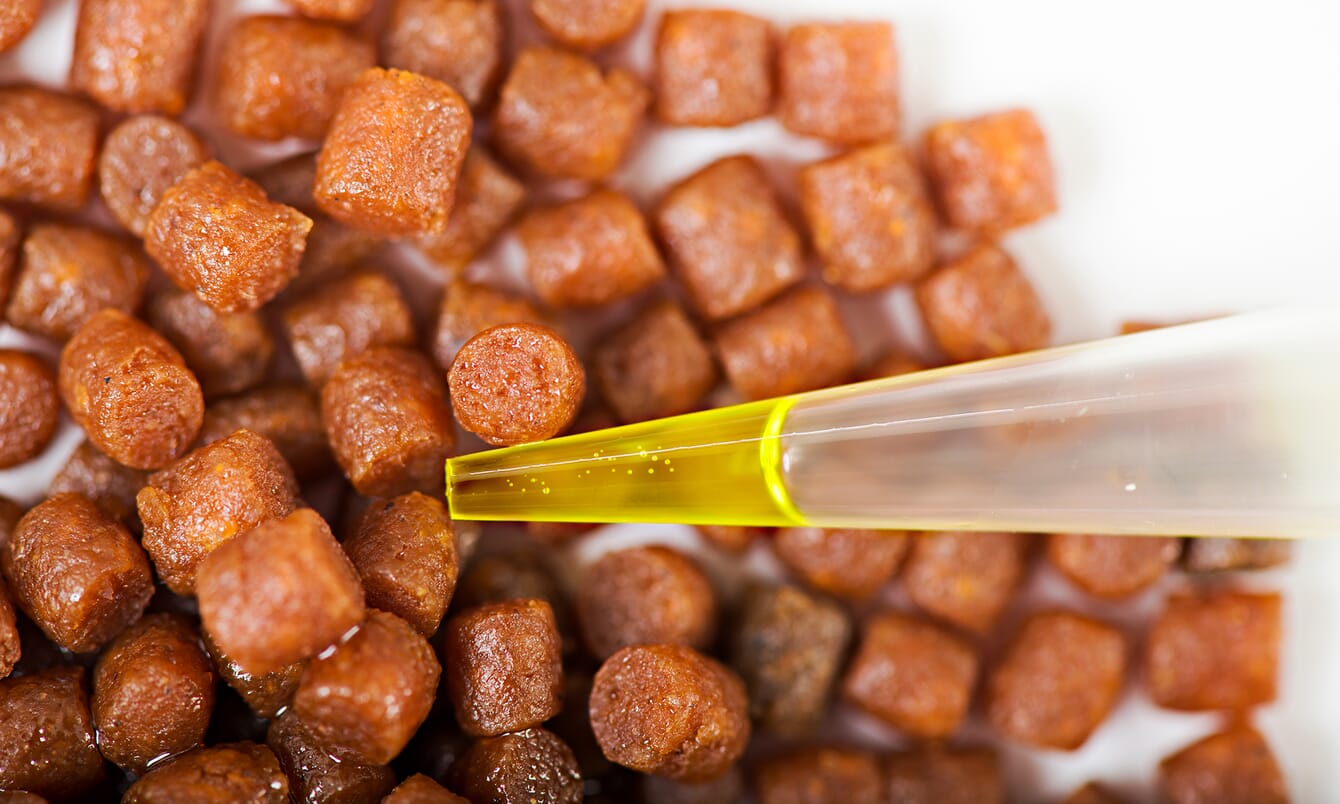
Aquafeed is the salmon industry's largest farm input and a leading portion of the sector's climate footprint © Nofima
Recent data from Norway’s salmon sector shows that the industry used similar ingredients in aquafeed in 2020 as they did in 2016 – but with a slight increase in the economic feed conversion ratio (eFCR). According to an analysis published in Aquaculture Reports, Norway’s salmon firms are including more novel ingredients in their formulations and decreasing the volume of marine ingredients as they work to become more sustainable.
Though this dataset tells a story of on-farm continuity and environmental stewardship, the researchers note that in the future, global events and husbandry considerations may play a stronger role in aquafeed formulation. Supply chain upsets stemming from the pandemic, increasing inflation and the war in Ukraine are putting pressure on raw ingredient prices and imports. Norway can’t easily produce its own feed ingredients, and alternatives to imported soy concentrate aren’t available in sufficient volumes. These factors could upset the industry’s status quo and may either spur the adoption of novel feed ingredients or force the sector to make difficult choices when creating aquafeed.
Why focus on feed?
Norway’s salmon industry is set to expand to meet growing demand for farmed fish, which has implications for aquafeed production and utilisation. Feed still stands out as the key economic input factor and environmental drag for the salmon sector. Producing, transporting and deploying feed comes with a notable carbon footprint – and this is before the industry accounts for the emissions that stem from other farming activities and the fish themselves.
Salmon firms are taking steps to lower the climate burdens of feed – but these strategic decisions rely on innovations in the nutrition segment and often come with trade-offs. Feed is nutrient- and energy-dense; and it’s made from high-quality ingredients that are traded on the global market. Their sourcing, concentrations and utilisation have a bearing on their sustainability and the overall footprint of salmon production.
Aquafeed presents a complex economic picture as well. Aquaculture nutritionists have revised ingredient lists multiple times when faced with fluctuating prices, environmental regulations or when new product options enter their portfolios. Consumers are also playing a role in feed formulation, putting pressure on firms to opt for more sustainable or low environmental impact offerings.
Another key reason to focus on aquafeed formulation and sustainability stems from changes in husbandry practices. Norwegian salmon farmers are opting to keep juvenile salmon in land-based recirculation facilities (RAS) for longer periods – transferring larger smolt to seawater pens and semi-closed holding units to keep sea lice at bay. They’re also having smolt transition to the seawater phase for most of the year, only taking a break during the coldest winter months. The industry has also adopted selective breeding techniques that have shifted salmon genetics away from their wild counterparts.
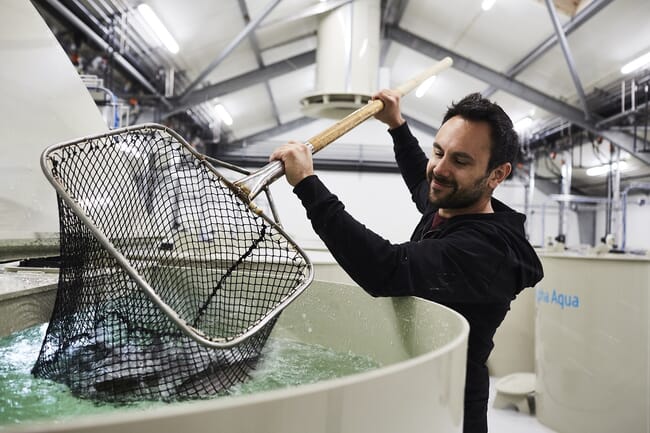
Norwegian salmon farmers are opting to keep juvenile salmon in land-based recirculation facilities (RAS) for longer periods © BioMar
These factors all play a role in the utilisation of feed resources – aquafeed needs to remain in optimum condition to be used in a RAS and some trials have shown that weather conditions and temperature can influence nutrient uptake in fish. Genetics also plays a strong role in salmon growth and nutrient utilisation. The overall sustainability of aquafeed involves more than an ingredient list.
How did Norway’s salmon sector use feed ingredients?
The researchers reviewed data from four large Norwegian feed companies: Cargill, Mowi, Skretting and BioMar. These firms produce nearly 100 percent of the aquafeed used in Norway’s salmon industry. The researchers also collected samples from slaughter-sized salmon for body and fillet analysis; and to measure feed utilisation.
Data shows that the salmon industry used 1,976,709 tonnes of feed ingredients to produce 1,467,655 tonnes of salmon in 2020. This utilisation led to an economic feed conversion ratio (eFCR) between 1.35 and 1.28 – which is slightly higher than figures from 2016 (1.30 to 1.21).
In terms of the ingredient breakdown, the researchers noted strong continuity from data in 2016. The key substrate in aquafeed is vegetable ingredients (73.1 percent) and marine ingredients comprised 22.4 percent of feed. About 4.1 percent of feed was made from micro ingredients like vitamin and mineral premixes, astaxanthin and crystalline amino acids. Researchers could account for the ingredients of 99.8 percent of the aquafeed they sampled. All the soy concentrate used in Norwegian feed was certified as deforestation-free, while marine ingredients were sourced from fisheries that had at least one environmental certification.
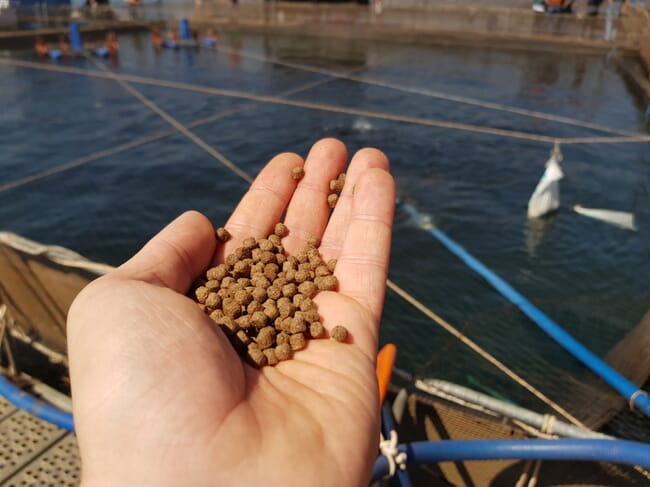
The industry used similar ingredients in 2020 as they did in 2016 - but more alternative feed ingredients are being included currently
Though the ingredient profile was broadly similar to 2016, the industry used more novel ingredients in 2020. 8,126 tonnes of single-cell proteins, insect meals, fermented products and microalgae were used in formulated salmon feed that year – around 0.4 percent of the ingredient footprint. The proportion of marine ingredients in aquafeed decreased from 2016 figures. The researchers expect the proportion and number of novel ingredients in feed to increase as firms make more circular economy pledges and respond to consumer preferences.
The industry’s metrics and ratios
The researchers calculated key metrics like utilisation efficiency, nutrient retention, eFCR, FIFO/FFDR and protein, lipid, and energy efficiency ratios. They found that the economic feed conversion ratio (eFCR), or weight for weight ratio of feed used to fish produced, increased to between 1.35 and 1.28. This increase could stem from multiple factors like feed intake, temperature, delousing procedures, disease outbreaks and the like. The researchers stress that the increase between 2016 and 2020 is relatively minor – it will have to be viewed as part of a longitudinal trend before we draw concrete conclusions.
In terms of nutrient retention – an estimate of how much energy from the total amount of feed ingredients is retained in the finished fish – the researchers noted that salmon are retaining more lipids than they were in 2016. Phosphorous retention had increased as well.
The industry used fewer marine ingredients in 2020 than it did in 2016. The estimated FIFO for fish meal in 2020 was 0.7, while the FIFO for fish oil came in at 1.8. The estimated FFDR for fish meal and fish oil was 0.5 and 1.5 respectively, while the marine protein dependency ratio and marine oil dependency ratios were both 0.5 in 2020. The researchers stressed that FIFO and FFDR is not necessarily an indicator for overall aquafeed sustainability. However, consumers are becoming more focused on these metrics as salmon aquaculture expands.
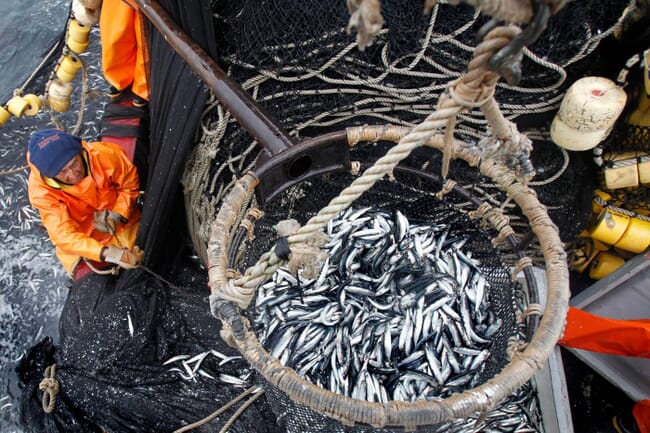
Though metrics like FIFO and FFDR can illustrate the amount of marine ingredients required to produce farmed fish, they aren't an overall indicator of sustainability © Alamy
Novel feed ingredients coming online
Alternative and novel feed ingredients have been trending topic in the industry, and 2020 saw more of them make their way onto ingredient lists. Insect meals, single-cell proteins, fermented products and microalgae are widely seen as a way for the sector to meet its sustainability commitments. Insect meal has been floated as a potential soy replacement and many fermented and single-celled products can be derived from waste materials, making them key as the industry works towards its environmental goals.
But there’s still a rough road ahead for the segment even though inclusion levels of alternative ingredients are increasing. The key challenges for novel feed ingredients are cost and production volumes. Consistency of supply is another factor, especially for ingredients produced from waste streams. These bottlenecks have prevented insect meals, microalgae and single-cell proteins from supplanting vegetable and marine ingredients in aquafeed.
The ingredients themselves present unforeseen barriers as well. Single-cell proteins have performed well in feed trials and give nutritionists the ability to add “functional” components that improve fish health. However, many SCPs contain indigestible cell wall material which would be excreted as additional faeces. The researchers also note that some have low palatability. These characteristics make them less attractive as feed ingredients. Feed intake is a key factor for fish welfare and production targets; and faeces will negatively impact water quality during production – especially since more salmon are being raised in recirculating systems.
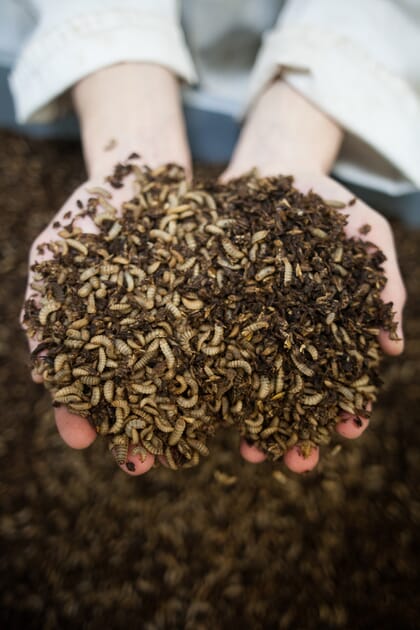
Though insect meals could potentially replace soy protein concentrate in aquafeed, a one-for-one swap isn’t feasible yet
Lack of production volume remains a stumbling block for insect ingredients. Though insect meals could potentially replace soy protein concentrate in aquafeed, a one-for-one swap isn’t feasible yet. Replacing the 413,611 tonnes of soy protein concentrate would require 1.47 million tonnes of larvae – that’s nearly the volume of salmon Norway produces. Put another way, the industry could only forego soy protein concentrate in aquafeed if insects were farmed at the same magnitude as salmon. This is a long way off, even under the rosiest forecasts for the insect industry.
The changing global context
The last three years haven’t exactly been “business as usual”. The Covid-19 crisis, supply chain snags, inflation reaching a 40-year high and the Russia-Ukraine war are weighing on global food production. This confluence of events is increasing calls for self-sufficiency – which has major implications for the salmon industry.
Norway produced 273 kg salmon per capita in 2020 with its aquafeed resources, but 91.7 percent of those feed ingredients had to be imported. The country’s climate can’t support native production of feed ingredients – making full self-sufficiency unfeasible. This leaves aquafeed production vulnerable to supply chain and economic shocks. Though Brazil was the primary supplier of vegetable protein sources, a substantial chunk of the ingredient list originated in Eastern Europe. The industry can’t bet on a global stability in the medium term – raw ingredients for feed may become more scarce and more expensive into 2023.
The researchers theorise that this may spur a change in the composition of salmon feed; making the industry adopt SCPs or bringing other protein and lipid sources into the mix. Though SCPs aren’t cost competitive with other feed ingredients right now, that could change as food and other commodity prices rise.
On paper, the industry’s feed ingredients and formulation hasn’t changed much since 2016 – but it is notable that Norway’s industry has ramped up production volumes since then. These figures mark the initial rise of the alternative ingredient sector. When feed ingredient data is released in 2024, it could reveal the segment’s rapid expansion and the industry’s response to surging commodity prices.




